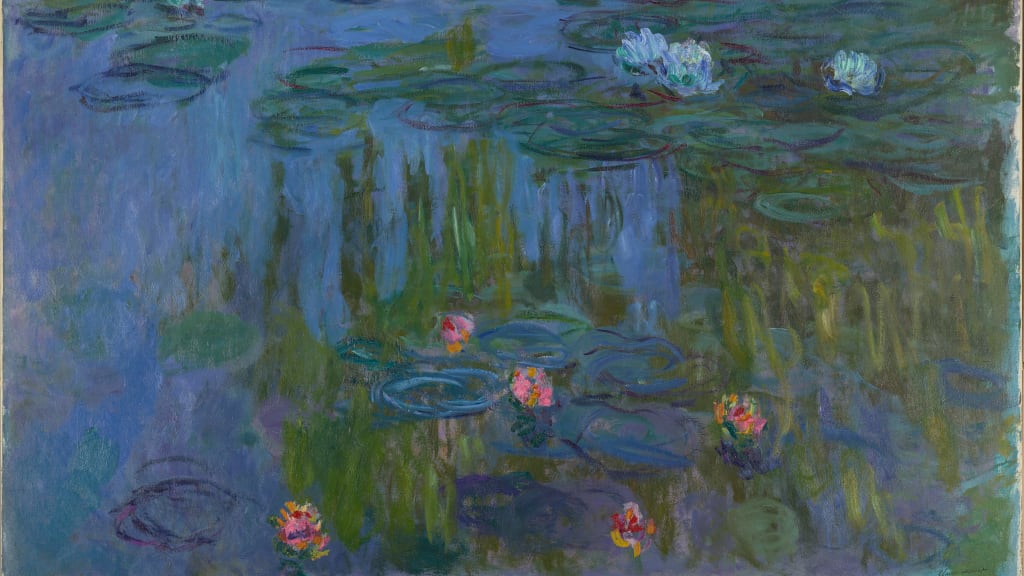Many visitors to the Portland Art Museum have oohed and aahed over Claude Monet’s Water Lilies. The 1914-15 oil painting is a cornerstone of the museum’s Impressionist collection and a perpetual visitor favorite. It features the characteristic blues and greens of the artist’s Giverny, France, garden, plus reflections and pink and blue blossoms.
The first time that conservator Charlotte Ameringer surveyed her new employer’s collection upon moving to Portland from the Museum of Fine Arts Boston in 2022, she saw all of the Monet’s glory, plus something else: a varnish on top that absolutely had to go.
“It significantly changes the way it looks—and not the way the artist wanted it to look,” she says. “Because it’s so important a painting, we have this obligation to present it in its best light.”
Ameringer has her chance starting in late June, thanks to a Bank of America grant, one of 24 artworks to receive support this year.
Monet created a series of about 250 Water Lilies (Nymphéas) paintings in his garden in Giverny over the three decades before his 1926 death. PAM’s is considered a particularly superb interpretation: It hung in the artist’s son Michel Monet’s dining room for more than 35 years before coming to PAM in 1959. That’s when the varnish went on, as per the industry standard.
The artist was very specific starting around the 1870s that his paintings should not be varnished, Ameringer says. She gives an analogy of collecting rocks at the beach: wet rocks have vibrant, saturated colors but once they dry out, all those color differences are much more subtle.
“The dry rock is what Monet wanted,” she says. “A wet rock is what we have. [The varnish] amps it up in a way he didn’t really intend.”
This is the second time a piece in PAM’s collection has been chosen for the Bank of America conservation program: In 2019, Roy Lichtenstein’s Brushstrokes, the yellow and green aluminum sculpture in front of the museum on Southwest Park Avenue, got a fresh coat of paint.
Art lovers can follow along with Ameringer’s painstaking work with a series of seven videos that she will create during the painting’s six-month conservation. She uses tiny, hand-rolled cotton swabs similar to Q-tips dipped in a mixture of solvents to remove the varnish without damaging any of the paint layers. She might be able to finish 2 square inches in an eight-hour workday.
But what is it like to work so intimately with a masterpiece?
“I think it’s really exciting, I’m not going to lie about that,” Ameringer says. “But we’re trained to treat every painting equally. You don’t know what will be important in 100 years.”
While Water Lilies is getting work done, visitors can get their French art fix at the museum’s exhibit Monet to Matisse: French Moderns, which runs June 8-Sept. 15. The show includes Monet’s Rising Tide at Pourville, an 1882 painting of a clifftop dwelling in Normandy.

